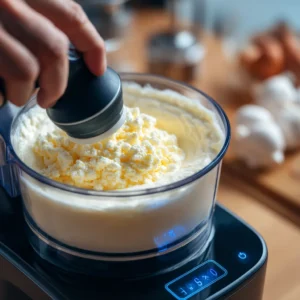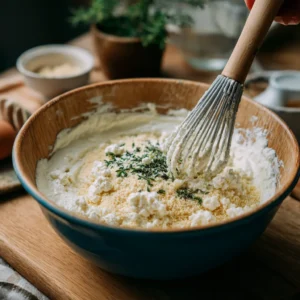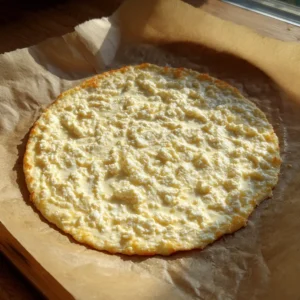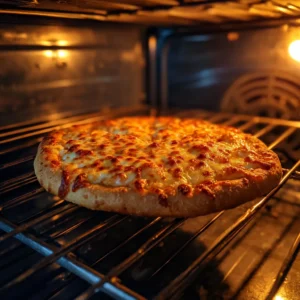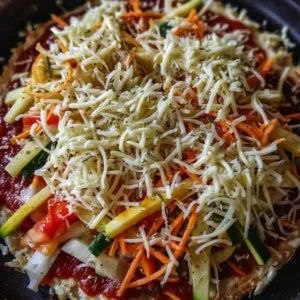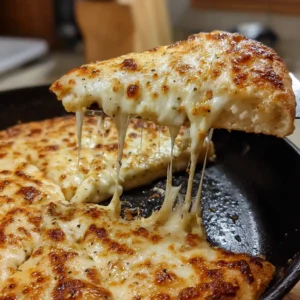A Crust Story from My Asheville Kitchen
If you told me ten years ago that I’d be swooning over cottage cheese in my pizza crust, I might have laughed somewhere between bites of my whole wheat flatbread and the memory of a kitchen disaster involving quinoa dough. But food has a funny way of surprising us when we keep an open heart and a curious spirit.
Hi, I’m Mia Langston, the founder of EatBrightly, a self-taught chef passionate about turning wholesome, real ingredients into vibrant meals. From growing up in upstate New York where pizza meant thick crusts and family game nights, to now crafting nourishing recipes from my Asheville kitchen, I’ve learned that healthy food doesn’t have to mean sacrificing flavor, fun, or texture.
This article is for anyone looking for a high-protein, easy-to-make, and downright delicious option like cottage cheese pizza crust. Whether you’re watching carbs, need more protein in your meals, or simply want to try something new, let me walk you through why this cottage cheese pizza crust might just become your go-to base.
Looking to expand your healthy cottage cheese recipe repertoire? From sweet snacks to savory mains, our 11 high protein cottage cheese recipes collection is packed with quick, protein-rich meals to energize your week.
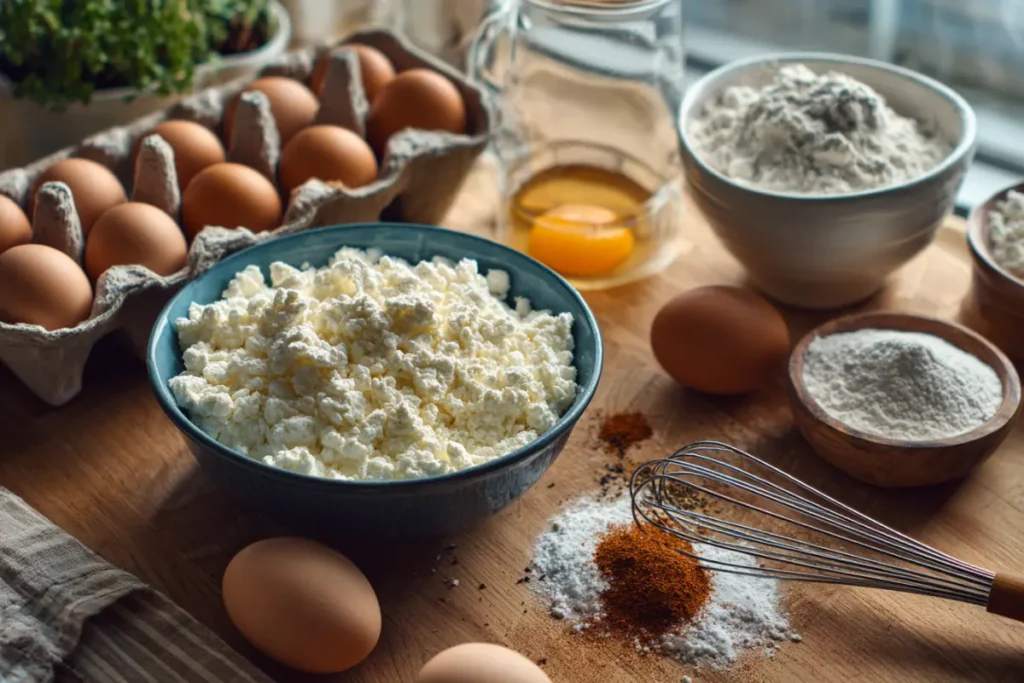
Table of Contents
Table of Contents
What Is Cottage Cheese Pizza Crust?
Understanding the Cottage Cheese Pizza Trend
Cottage cheese pizza crust didn’t just pop up out of nowhere. It’s part of a larger wave of home cooks rethinking traditional carbs in favor of nourishing, functional alternatives. What makes this trend stand out isn’t just that it’s low-carb and protein-rich, but that it’s actually delicious. The creamy tang of cottage cheese transforms when baked, creating a chewy, slightly crisp crust that can stand up to any topping.
In my kitchen, this crust was born out of experimentation. Less perfection and more play. I was trying to create something gluten-free that didn’t taste like cardboard. A tub of cottage cheese, two eggs, and some almond flour later, and I was hooked.
Why Cottage Cheese as a Dough Ingredient?
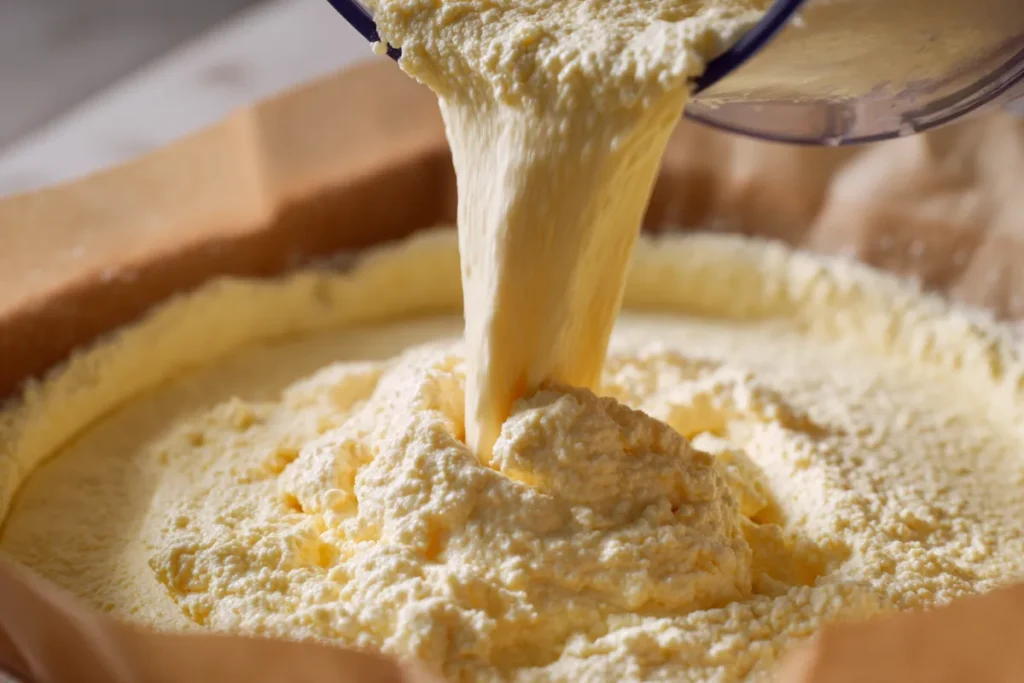
Cottage cheese might seem like an oddball in the crust game, but here’s why it works so well:
- Protein Punch: With up to 30g of protein per serving, it fuels you better than standard white flour.
- Moisture & Texture: It keeps the dough moist without needing added oils or butter.
- Neutral Flavor: Its mild, slightly tangy profile pairs beautifully with spices, sauces, and toppings.
From a nutrition perspective, it’s a game changer. From a flavor perspective? It’ll make you rethink everything you knew about crusts.
If you’ve ever found pizza too heavy or like it left you sluggish, this version will feel lighter and more satisfying. Plus, you get that same pizza joy without the guilt.
Health Benefits of Using Cottage Cheese in Pizza Crust
Nutritional Value and High-Protein Benefits
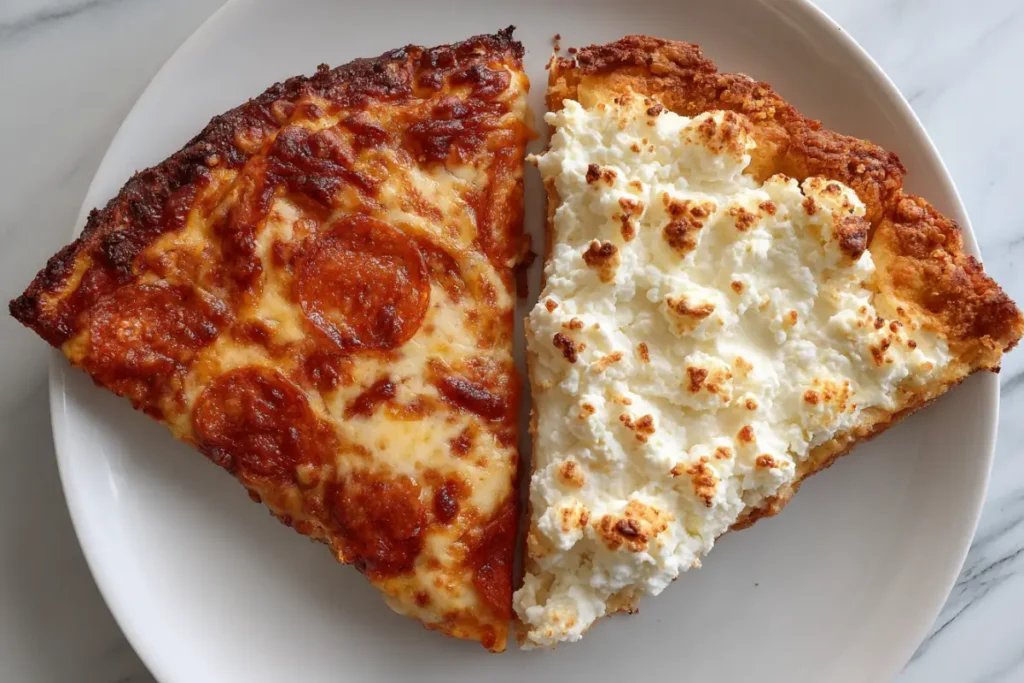
When it comes to creating healthier meals, I always start by asking one question: how can I pack in more nourishment without losing joy? Cottage cheese answers that beautifully.
Cottage cheese is rich in casein protein, which digests slowly and keeps you full longer. Just a half-cup serving delivers roughly 13–15 grams of protein, which is more than most pizza doughs provide in an entire slice. That’s why using it in crust isn’t just trendy, it’s smart.
Here’s a quick comparison:
| Nutrient (per serving) | Traditional Dough | Cottage Cheese Crust |
|---|---|---|
| Protein | 5g | 15g+ |
| Net Carbs | 25–30g | 3–6g |
| Fat | 1g | 4–6g (healthy fats) |
| Calories | 180+ | 120–140 |
This high-protein profile is exactly why cottage cheese pizza crust is gaining popularity. It supports blood sugar stability, muscle repair, and appetite regulation, making it ideal for anyone managing weight, fitness goals, or a low-glycemic lifestyle.
For my readers who are post-workout snackers or busy moms juggling balanced dinners, this crust is a game-changer.
Cottage Cheese vs. Traditional Pizza Dough
Let’s be honest. Traditional pizza dough—flour, yeast, sugar, oil—may taste comforting, but it doesn’t always love us back. It’s often loaded with refined carbs, low in nutrients, and lacking in protein. That leaves you full for an hour, then hungry again just as fast.
In contrast, a cottage cheese pizza crust offers:
- More protein per calorie
- Fewer empty carbs
- Gluten-free or low-gluten options
- No need for yeast or proofing time
Plus, you get that satisfying chewiness and golden crisp edge without needing hours of rest or kneading. It’s quick, efficient, and wholesome.
For families trying to sneak in protein, picky kids, or anyone craving pizza without the crash, this crust delivers both flavor and function.
How to Make Cottage Cheese Pizza Dough (2-Ingredient & 3-Ingredient Methods)
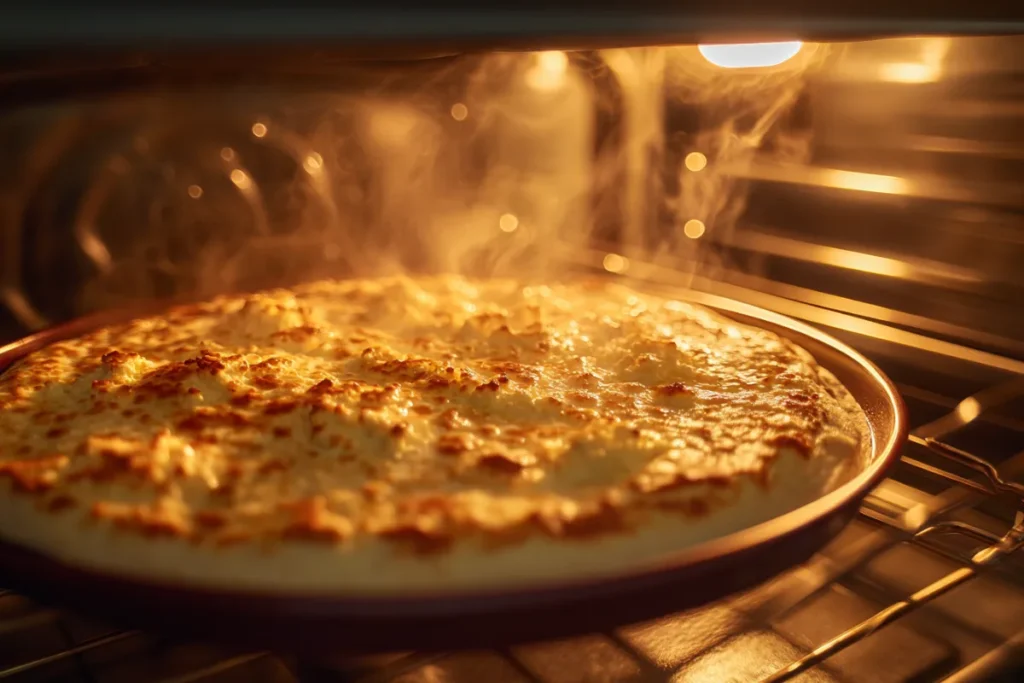
Step-by-Step: 2-Ingredient Cottage Cheese Pizza Base
Sometimes the best recipes are the simplest. When I first played around with this version, I was shocked by how easy it was to make something so satisfying with just two staples I always have in the fridge.
What You’ll Need:
- 1 cup full-fat cottage cheese
- 2 eggs
Instructions:
- Preheat your oven to 375°F and line a baking sheet with parchment paper.
- Blend cottage cheese and eggs in a food processor until completely smooth. No chunks. You’re aiming for a pancake batter-like consistency.
- Pour the batter into a round or rectangular shape on your lined pan. Spread it out evenly using a spatula or back of a spoon—aim for about ¼ inch thick.
- Bake for 20–25 minutes or until the edges are golden and the center is firm to the touch.
- Remove from the oven and let it cool for 5 minutes before adding toppings.
This version creates a lighter, almost cloud-like base. It’s perfect for soft toppings and makes a great flatbread too.
Step-by-Step: 3-Ingredient Cottage Cheese Pizza Crust
If you’re after something a little more chewy and bread-like, this version adds structure without complicating things.
What You’ll Need:
- 1 cup full-fat cottage cheese
- 1 large egg
- ¼ cup almond flour (or oat flour if not low-carb)
Optional Flavor Boosters:
- ¼ tsp garlic powder
- Pinch of oregano or Italian herbs
- Dash of sea salt
Instructions:
- Blend the cottage cheese and egg until smooth.
- Stir in the flour and any seasonings to form a thick batter.
- Spread onto a parchment-lined pan just like in the first method.
- Bake at 400°F for 18–22 minutes. You want the bottom golden and the center cooked through.
- Cool slightly, then top and return to the oven for 5–7 minutes to finish.
This crust holds up beautifully to classic toppings like tomato sauce, mozzarella, turkey pepperoni, or roasted veggies.
Whether you’re going minimal or adding a little extra structure, both versions freeze well and can be made ahead for easy weeknight meals.
Best Variations and Toppings for Cottage Cheese Crust
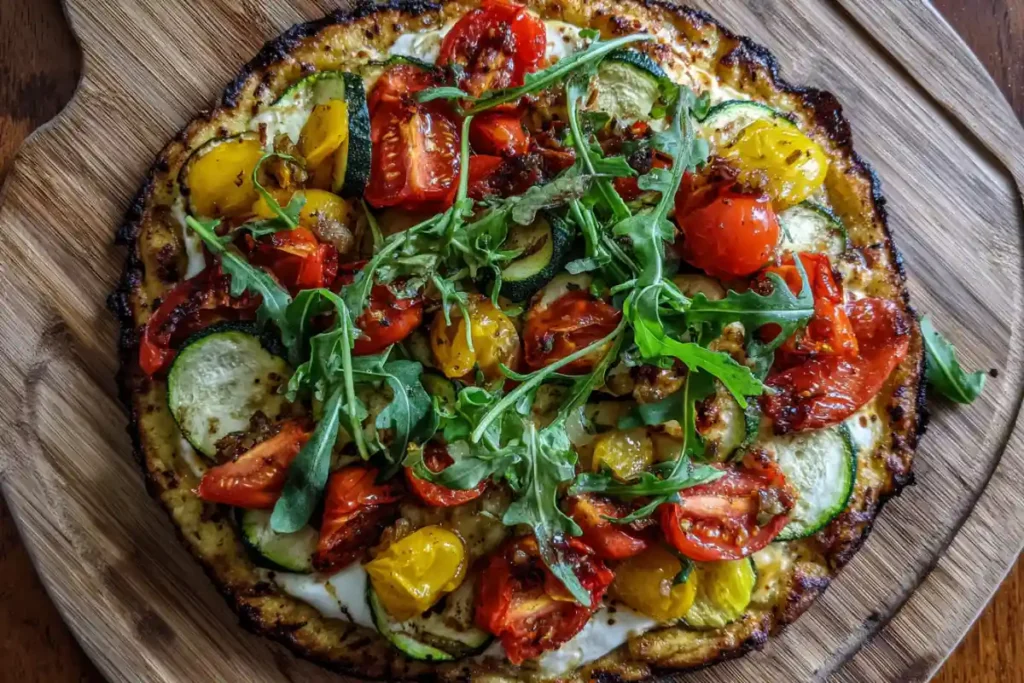
Low-Carb, Gluten-Free, and Keto Options
One of the best things about cottage cheese pizza crust is how versatile it is. Whether you’re keeping it low-carb, following a gluten-free lifestyle, or just looking for more wholesome meals, this crust adapts beautifully.
Here are a few favorite variations you’ll love experimenting with:
| Variation | Swap | Result |
|---|---|---|
| Keto-Friendly | Use almond flour instead of oat | Ultra low-carb, nutty flavor |
| Dairy-Light | Use lactose-free cottage cheese | Gentle on digestion |
| Grain-Free | Add flax meal or coconut flour | Slightly dense, fiber-rich |
| Crispier Texture | Add 1 tbsp of grated parmesan | Golden, cheesy edges |
For my gluten-sensitive readers, I’ve found that using superfine almond flour keeps the crust light and still chewy, while also keeping net carbs very low.
Flavor Combinations and High-Protein Toppings
Now let’s talk toppings the fun part of customizing your cottage cheese pizza crust for flavor and nutrition.
Here are some of my favorite nutrient-rich combos to elevate your crust:
1. Mediterranean Delight
- Toppings: Roasted red peppers, olives, spinach, feta
- Finish with: Lemon zest and a drizzle of olive oil
2. Green Goddess Pizza
- Toppings: Pesto, zucchini ribbons, goat cheese, arugula
- Finish with: Hemp seeds for extra protein and crunch
3. Spicy Veggie Supreme
- Toppings: Bell peppers, red onions, mushrooms, jalapeños
- Sauce: Smoky chipotle tomato
4. Sweet & Savory
- Toppings: Sliced figs or dates, gorgonzola, arugula
- Finish with: Balsamic glaze and chopped walnuts
5. Breakfast-for-Dinner Pizza
- Toppings: Turkey sausage, kale, cracked egg (baked on top)
- Sauce: Garlic Greek yogurt spread
I encourage you to use this crust as a blank canvas. It holds up well to moisture-rich toppings like tomatoes and sauces, but really shines when layered with textures creamy, crunchy, and melty.
And remember: toppings don’t have to be perfect. Let your intuition lead. I always say, if it makes you smile before it even hits the oven, you’re doing it right.
If you’re craving something sweet but still protein-forward, don’t miss our irresistible cottage cheese cookie dough. It’s safe to eat raw, requires no baking, and makes the perfect post-pizza treat.
Does Cottage Cheese Melt Like Regular Cheese?
Baking Behavior of Cottage Cheese
If you’ve ever spooned cottage cheese onto a baked dish expecting it to turn into a gooey, stretchy mozzarella moment, you probably ended up… confused. The truth is, cottage cheese doesn’t melt like traditional cheeses, and that’s actually a good thing when it comes to pizza crust.
When baked in a crust, cottage cheese:
- Loses moisture gradually
- Firmly binds with eggs or flour
- Dries into a chewy, structured base rather than bubbling like mozzarella
That’s why it works so beautifully as a base. The curds break down during blending, and in the oven they solidify to form structure, rather than melt away or become greasy. The result is a lightly crisped edge, a bread-like chew, and no sogginess in the middle.
So no, cottage cheese won’t behave like shredded cheese, but that’s what makes it ideal for crusts it supports, rather than melts away.
Taste, Texture, and Crispiness After Baking
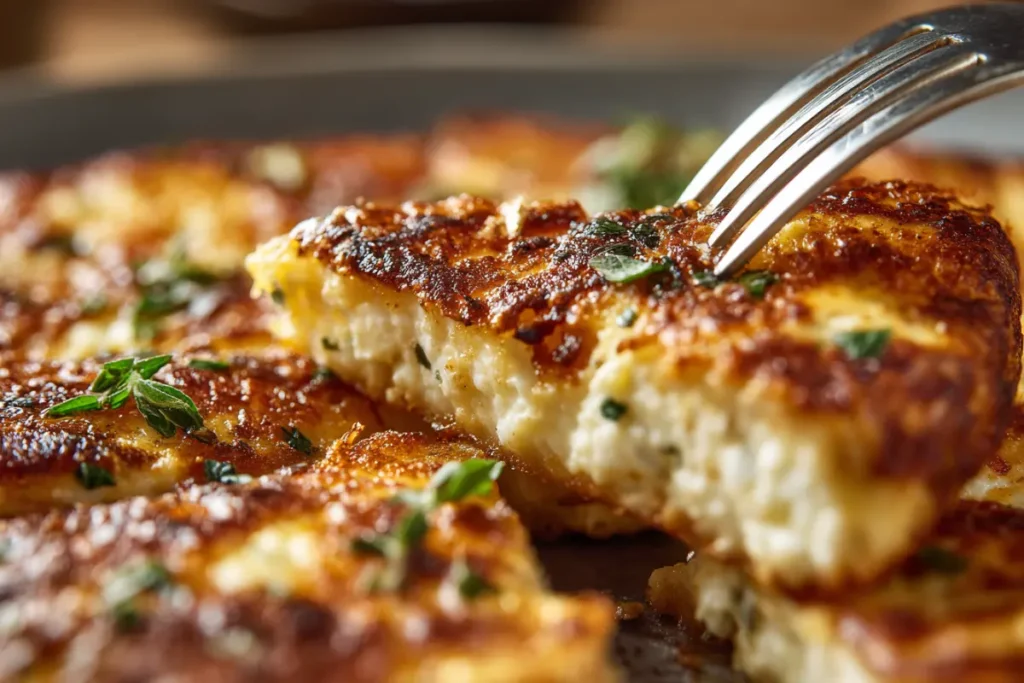
Here’s what you can expect when your cottage cheese pizza crust comes out of the oven:
- Texture: Firm and slightly chewy, with a tender bite in the center and crisp edges
- Flavor: Mild, slightly tangy, and a perfect base for bolder toppings
- Appearance: Golden brown around the rim, pale and flecked with herbs if added
When I first tried this crust, I expected it to taste “diety” or weirdly eggy but I was genuinely surprised. It’s more neutral than you’d think, and when paired with tomato sauce, herbs, and roasted veggies, it becomes a comforting, savory, and satisfying bite.
Want a deeper golden finish? I sometimes brush the outer edges with olive oil and sprinkle a pinch of garlic salt before baking. Game changer.
For those who love a crispier base, using a pizza stone or cast iron pan can help get that extra crunch, especially if your oven runs a little cool.
Is Cottage Cheese Pizza Dough Really Healthier?
Calories, Carbs, and Protein Comparison
In the world of healthy crusts, there are a lot of options—and even more confusion. So let’s break it down. Is cottage cheese crust just another gimmick, or is it truly better for you? Spoiler: it holds its own better than most.
Let’s compare the basics:
| Crust Type | Calories (per slice) | Net Carbs | Protein | Fat |
|---|---|---|---|---|
| Traditional White | ~180 | 26g | 5g | 3g |
| Whole Wheat | ~160 | 22g | 6g | 2g |
| Cauliflower Crust | ~140 | 8g | 7g | 6g |
| Almond Flour Crust | ~170 | 6g | 8g | 13g |
| Cottage Cheese Crust | ~120 | 3–6g | 15g+ | 4–6g |
Studies show that high-protein meals can significantly reduce hunger and support weight loss goals. Here’s a detailed look at how protein helps with appetite control and weight management.
As you can see, cottage cheese pizza crust outperforms nearly every other option in the protein category, while staying impressively low in both calories and carbs. That’s a powerful combo for blood sugar control, satiety, and energy.
It’s no wonder I often recommend this crust to my cooking class students who are:
- Managing type 2 diabetes
- Trying to lose weight without giving up favorites
- Following a high-protein, low-glycemic lifestyle
And unlike some cauliflower-based crusts, this one has zero aftertaste and no soggy middle.
Want to level up pizza night? Pair your slice with our melty, spicy cottage cheese queso dip for a crowd-pleasing combo that’s full of flavor and extra protein.
Low-Fat and High-Protein Benefits for Fitness
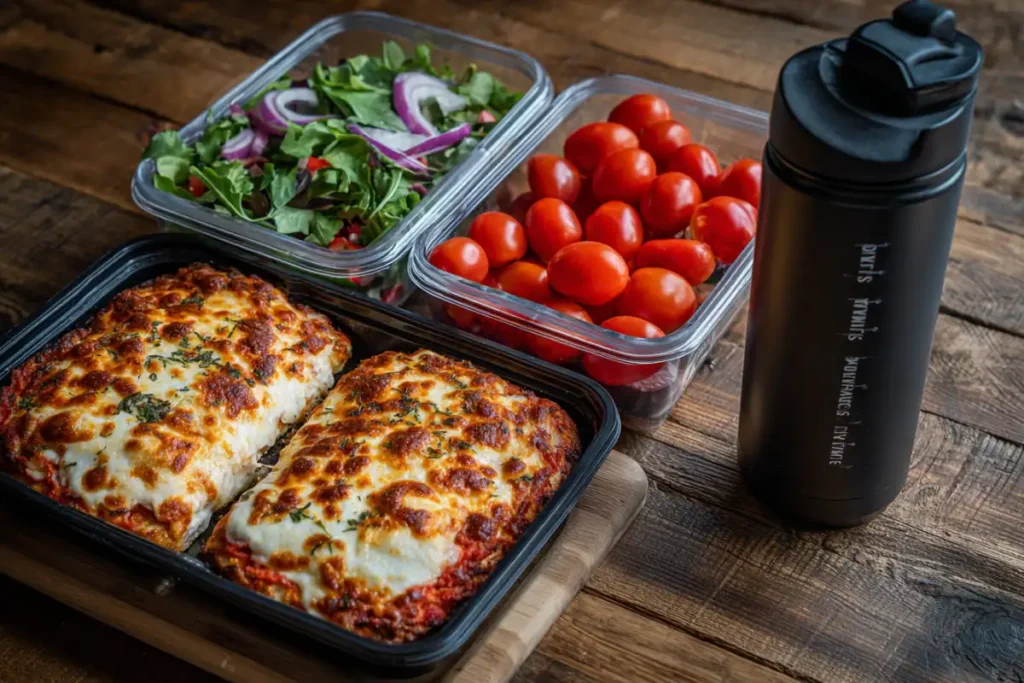
If you’re into fitness, muscle-building, or clean eating, this crust could quickly become your best-kept secret. Cottage cheese is a powerhouse for:
- Muscle repair and growth thanks to slow-digesting casein
- Meal prep efficiency, since the crust holds up well when refrigerated or frozen
- Post-workout meals, especially when topped with veggies, lean proteins, or even a drizzle of tahini
Many of my readers report using this crust to sneak more protein into their kids’ meals or replace overly processed pizza doughs with something real, fresh, and energizing.
So is it healthier? Yes and not just because it’s lower in calories or carbs. It’s healthier because it gives you more usable nutrition per bite.
The Healthiest Crust Alternatives Compared
Almond Flour, Cauliflower, Greek Yogurt, and Cottage Cheese Crust
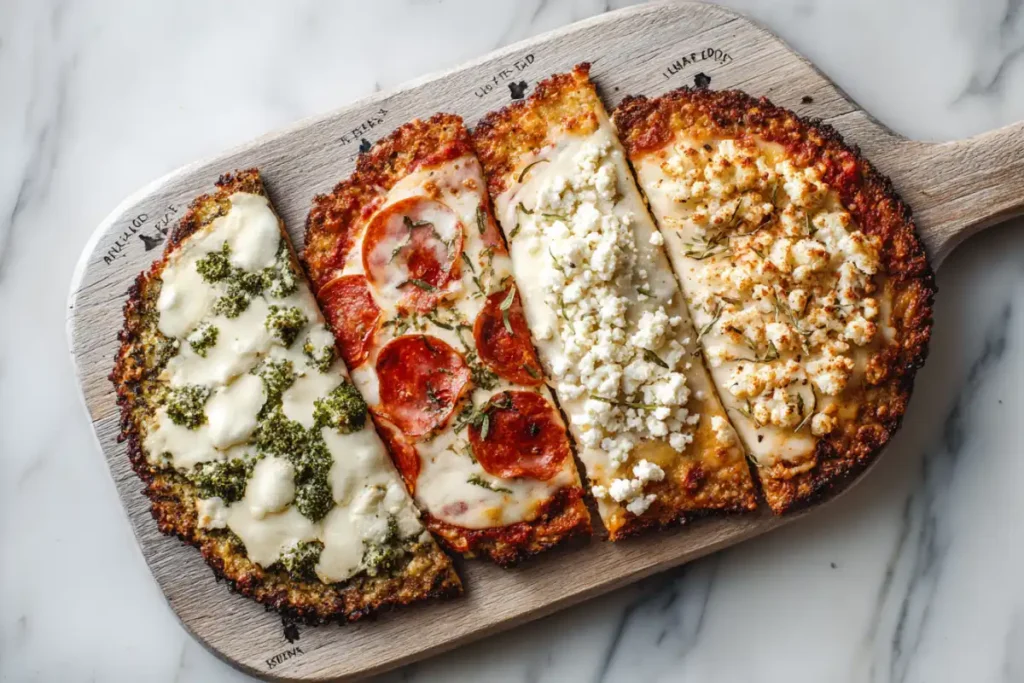
The search for the perfect healthy pizza crust is real. If you’ve ever stood in your kitchen weighing the pros and cons of almond flour vs. cauliflower, or wondering if Greek yogurt crusts are worth the hype, you’re not alone.
Here’s a head-to-head look at four of the most popular nutritious crust options including our star: cottage cheese.
| Crust Type | Texture | Protein | Carbs | Best For |
|---|---|---|---|---|
| Cottage Cheese | Chewy, firm, slightly crisp | High (15g+) | Low (3–6g) | High-protein diets, meal prep, gluten-free eaters |
| Almond Flour | Dense, crumbly | Moderate (7–9g) | Low (5–7g) | Keto, grain-free baking, nut lovers |
| Cauliflower | Soft, often moist | Low–Mod (6g) | Moderate (8–10g) | Veggie-forward eaters, low-calorie goals |
| Greek Yogurt | Doughy, chewy | Moderate (10g) | Moderate (12–14g) | Quick crusts, family-friendly bakes |
Let’s be honest cauliflower crust can be a little fussy. Between steaming, wringing, and baking it twice, it’s a labor of love. Almond flour’s great, but expensive, and tends to be dry unless balanced with added fat or cheese. Greek yogurt crusts work well for many, but tend to be higher in carbs.
Cottage cheese crust hits the sweet spot easy to prep, affordable, and nutritionally dense.
Pros and Cons of Each Dough Alternative
Let’s zoom in on the pros and cons so you can choose what fits your goals, pantry, and schedule.
Cottage Cheese Crust
Pros:
- Highest in protein
- Low carb and gluten-free
- Super fast to prep
- Moist but never soggy
Cons:
- Doesn’t stretch like traditional dough
- Needs blending to remove curds
Almond Flour Crust
Pros:
- Grain-free and low-carb
- Nice crisp if baked thin
Cons:
- Can be dry or crumbly
- Higher in fat and calories
Cauliflower Crust
Pros:
- Veggie-packed
- Low calorie
Cons:
- Time-consuming
- Can get soggy
Greek Yogurt Crust
Pros:
- Easy to work with dough
- Chewy and satisfying
Cons:
- Higher carb count
- Requires flour or baking powder
In the EatBrightly kitchen, I always suggest starting with what your body craves and your schedule allows. But if you’re looking for something balanced, easy, and protein-forward, cottage cheese crust wins for everyday pizza night.
Expert Tips for the Perfect Cottage Cheese Pizza Base
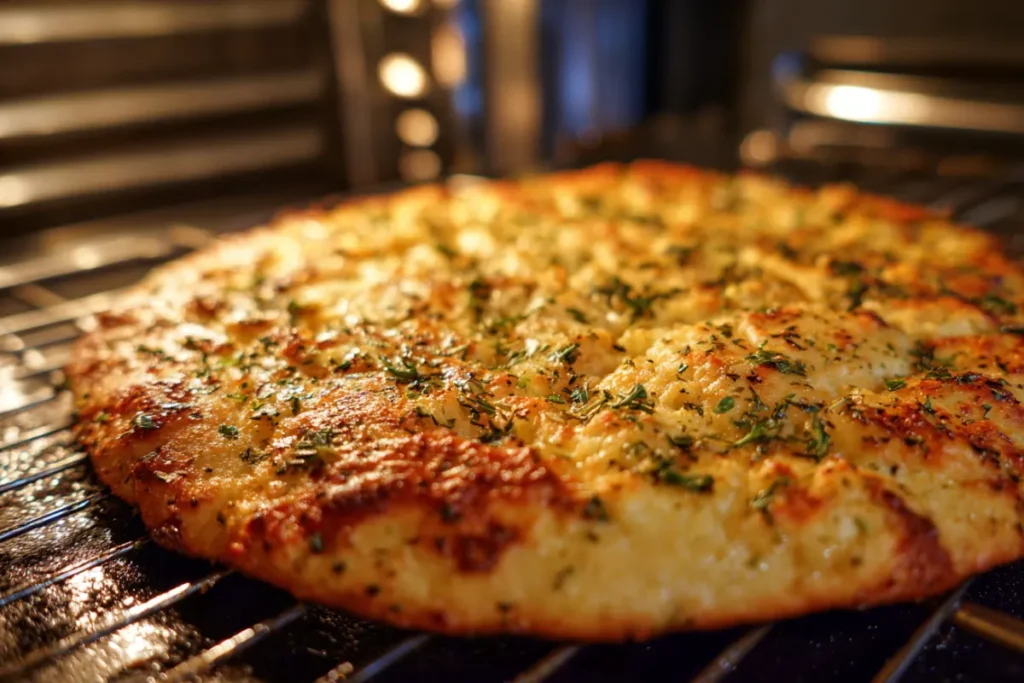
Avoiding Sogginess and Getting a Crispy Crust
Let’s talk texture. One of the most common concerns I hear from readers trying alternative crusts is: “Will it hold up?” With cottage cheese, the answer is yes but with the right technique.
Here’s how to ensure your crust bakes crisp, not limp:
1. Blend, don’t stir:
Blending the cottage cheese smooths out curds and reduces extra moisture. A food processor or high-speed blender works best.
2. Use parchment paper or a silicone baking mat:
This helps the crust lift cleanly and crisps the bottom.
3. Go thin, not thick:
Spread your batter about ¼ inch thick. Too thick, and you risk a soggy center. Think flatbread-style.
4. Bake before topping:
Always pre-bake the crust for at least 18–25 minutes before adding any sauce or cheese. This gives the base time to set and firm up.
5. Let it cool slightly before topping:
Cooling helps it tighten. Adding toppings too soon can soften the structure.
For added crunch, I often sprinkle a light dusting of almond flour or chickpea flour under the crust before baking. It’s a subtle touch, but wow it makes a difference.
Cooking Tools, Baking Temperatures, and Timing
Even a stellar crust can flop if your tools or timing are off. Here’s my EatBrightly-tested approach:
| Element | Recommendation |
|---|---|
| Oven Temp | 375°F–400°F |
| Pan Type | Sheet pan, pizza stone, or cast iron |
| Bake Time (Pre-bake) | 20–25 mins |
| Bake Time (After toppings) | 5–8 mins |
| Cooling Time | 3–5 mins before slicing |
Bonus tip: For even browning and crisper texture, I sometimes move the pan to the bottom rack for the last 5 minutes of baking.
If you’re making pizza for a group, double the batch and make individual crusts ahead. They store well refrigerated for 3 days or frozen for up to a month. Just thaw, reheat, and top as needed.
Frequently Asked Questions (FAQs)
Can I make pizza dough with cottage cheese?
Yes, absolutely! Cottage cheese makes a surprisingly effective and nutritious base for pizza dough. When blended with eggs and optionally flour or almond flour, it creates a firm, chewy, high-protein crust that holds up to toppings. It’s a great gluten-free and low-carb alternative to traditional doughs, and it takes less than 30 minutes start to finish.
What is the 2 ingredient cottage cheese pizza base?
The 2-ingredient cottage cheese pizza base is made with:
Cottage cheese
1Eggs
That’s it! Blend them together until smooth, pour onto a parchment-lined baking sheet, bake until golden, and you have a low-carb, high-protein pizza base. It’s light, fluffy, and perfect for softer toppings or veggie-forward combinations.
You can customize it with herbs or seasonings for extra flavor, but the base works beautifully on its own.
Does cottage cheese melt like cheese?
Not exactly. Cottage cheese doesn’t melt like mozzarella or cheddar. Instead, when baked, it firms up and creates a structure that can support other ingredients—especially when used in crusts. This makes it perfect for baked recipes where you want a solid texture without oiliness or runniness.
For example, when mixed into pizza dough, it creates a chewy, slightly crisp crust without getting greasy.
What is the healthiest crust for pizza?
The healthiest crust depends on your goals, but cottage cheese crust ranks high for most eaters. It’s:
Low in carbs
High in protein
Naturally gluten-free
Quick to prepare
Satisfying and nutrient-dense
Other healthy contenders include almond flour crust (great for keto), cauliflower crust (great for low-cal), and Greek yogurt dough (good for higher carb tolerance).
What is a healthy alternative for pizza dough?
There are several healthy alternatives:
Cottage cheese crust: High-protein, low-carb
Almond flour crust: Grain-free and keto-friendly
Cauliflower crust: Veggie-based and low-calorie
Greek yogurt dough: Quick, chewy, and higher in protein
All of these can be customized with herbs, seeds, or veggies to suit your diet. Cottage cheese crust stands out for its simplicity and nutrition.
How to make pizza dough with 3 ingredients?
To make 3-ingredient cottage cheese pizza dough, all you need is:
1 cup cottage cheese
1 egg
¼ cup almond flour or oat flour
Blend the cottage cheese and egg, then stir in the flour. Spread it thin, bake until golden, and you’ve got a protein-packed crust ready for toppings.
It’s perfect for quick lunches, meal prep, or weeknight dinners that feel indulgent but fuel your body well.
Why Cottage Cheese Crust May Be Your New Favorite Pizza Base
If there’s one thing I’ve learned through years of experimenting in my Asheville kitchen, it’s this: food that fuels you doesn’t have to be boring, bland, or complicated.
This cottage cheese pizza crust is proof. It’s high in protein, low in carbs, quick to make, and genuinely delicious. Whether you’re gluten-free, keto-curious, or just looking to sneak more nutrients into pizza night, this crust is a keeper.
Try it once, and you’ll see it’s not a compromise. It’s a celebration of real food, creative cooking, and nourishment that feels joyful.
Thanks for stopping by EatBrightly. Here’s to pizza nights that love you back.
With gratitude,
Mia Langston
Cottage Cheese Pizza Crust (High Protein + 2 Ingredients!)
A high-protein, low-carb cottage cheese pizza crust made with just 2–3 simple ingredients. Perfect for gluten-free, healthy pizza nights in under 30 minutes.
- Prep Time: 5 minutes
- Cook Time: 25 minutes
- Total Time: 30 minutes (default: prep + cook)
- Yield: 2–3 personal pizzas (about 8 slices total) 1x
- Category: Main Course, Snack
- Method: Baking
- Cuisine: American, Healthy, Fusion
- Diet: Low Calorie
Ingredients
For 2-Ingredient Version:
- 1 cup full-fat cottage cheese
- 2 large eggs
Optional Add-Ins (for extra flavor):
- ¼ teaspoon garlic powder
- ¼ teaspoon Italian seasoning
- Pinch of sea salt
For 3-Ingredient Upgrade (Chewier Texture):
- Add ¼ cup almond flour or oat flour
Instructions
Preheat oven to 375°F (190°C). Line a baking sheet with parchment paper.
Blend cottage cheese and eggs in a food processor until smooth.

Blend until smooth—no lumps allowed (Optional) Stir in almond or oat flour and seasoning until evenly combined.

Stir in flour and spices for extra structure and flavor Pour the batter onto the parchment-lined sheet and spread to ¼ inch thick using a spatula.

Spread it thin and even for the perfect base Bake for 20–25 minutes until the crust is golden around the edges and firm in the center.

Bake until golden around the edges and set in the center Remove, let cool for 5 minutes. Add toppings of choice (sauce, cheese, veggies).

Top with your favorites—get creative! Return to oven and bake another 5–8 minutes, or until cheese melts and edges crisp.
Slice and enjoy

Crispy, melty, nourishing—dig in
Notes
Use full-fat cottage cheese for the best texture and flavor.
For extra crispiness, bake on a pizza stone or move to the lower oven rack.
Brush olive oil + garlic powder around the edges before baking for flavor magic.
Nutrition
- Serving Size: 1 personal pizza crust (⅓ of recipe)
- Calories: 165 kcal
- Sugar: 1.5 g
- Sodium: 320 mg
- Fat: 10 g
- Saturated Fat: 3 g
- Unsaturated Fat: 6 g
- Trans Fat: 0 g
- Carbohydrates: 4.5 g
- Fiber: 1 g
- Protein: 15 g
- Cholesterol: 95 mg
Keywords: cottage cheese pizza crust, high protein pizza crust, 2 ingredient pizza dough, low carb pizza base, healthy homemade pizza crust, gluten free pizza crust, cottage cheese recipes, keto pizza crust alternative, protein pizza dough recipe, easy cottage cheese pizza base, healthy pizza night ideas, no flour pizza dough, meal prep pizza crust, high protein vegetarian pizza, low glycemic pizza dough, cottage cheese flatbread, baked cottage cheese crust, homemade healthy pizza dough, quick low carb pizza, clean eating pizza recipe



